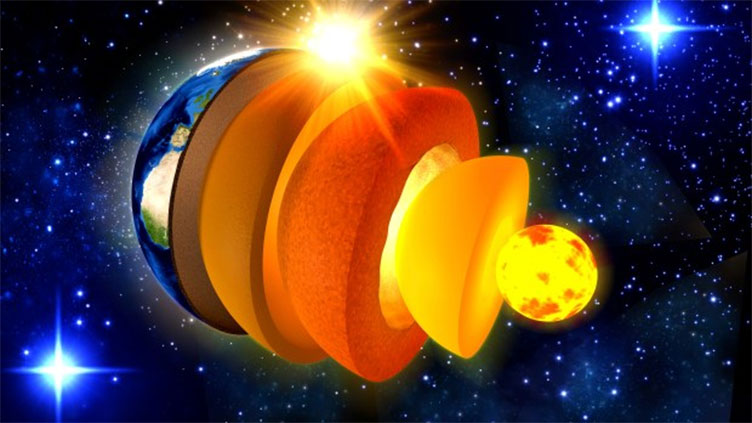Earth's core is leaking as mystery element detected in 62m-year-old lava

Technology
Scientists don’t know what will happen next
(Web Desk) - SCIENTISTS have been left baffled after a mysterious element was detected in ancient lava - leading to theories that the Earth's core is leaking.
A study of 62-million-year-old lava flows on Baffin Island in Canada's Arctic Archipelago has found unusually high levels of helium-3 - a rare isotope associated with the insides of our planet.
The discovery was published in the journal Nature on Wednesday and has sparked mass debate amongst fellow researchers and experts.
The combined team of geochemists from Woods Hole Oceanographic Institution and California Institute of Technology had taken the readings from Baffin Island's ancient lava flows.
The large landmass contains the highest ratios of helium-3, helium-4, and a third isotope that have ever been found in terrestrial volcanic rocks.
The research team noted that finding such high levels of helium-3 at a terrestrial site is a big deal.
As soon as it makes its way to the surface, it escapes into the atmosphere and disappears into space.
If it is found on the surface, the odds are high that it made its way out of the core.
If the helium-3 is coming from the core, then the other material around it should be as well - offering further physical examples of core material.
As a result, the recent findings could upend what scientists previously knew about Earth's core, which was thought to be sealed away.
If it can be proved that the material is indeed leaking from the core, it will provide scientists with a way to study core material that has never been done before.
This primordial helium-3 may contain secrets about the formation of our planet that cannot be accessed in other ways.
“We know very little about Earth's core, other than that it exists,” Forrest Horton, a geochemist at Woods Hole Oceanographic Institution, told VICE.
“This makes studying the core both intriguing and frustrating.
"Traditionally, the core and outer layers of our planet (mantle and crust) were presumed to be geochemically isolated (i.e., material does not transfer back and forth).
"Increasingly, scientists have been challenging this notion.”
Horton adds that the "exciting" discovery suggests that the deep Earth is more dynamic than first realised.



